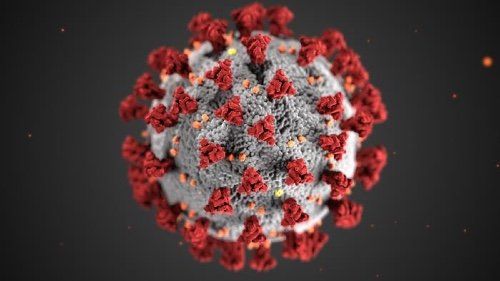Low-Dose High-Res CT Protocol for COVID-19
Protocol can minimize dose for CT scans when viral testing is less available.

Even though CT scans aren’t recommended for COVID-19 detection, radiologists still need a strategy for using the modality – and minimizing radiation dose exposure – for cases where other detection options aren’t readily available, according to industry experts.
To provide some guidance for imaging patients with suspected COVID-19 infection, a team of experts from the Iranian Society of Radiology, led by Mehran Arab-Ahmadi, M.D., MPH, outlined a strategy in Academic Radiology for imaging when there’s a shortage of the gold standard of testing, reverse transcriptase-polymerase chain reaction (RT-PCR).
“Low dose high-resolution CT might have more advantages than RT-PCR, especially in highly infected societies with low availability of PCR-kits,” the team wrote. “Our primary goal of screening and evaluation is to detect COVID-19 infection in patients with highly suspicious clinical conditions and laboratory findings.”
The Society developed a protocol for use with patients who have a high probability of COVID-19. It was created to work with all CT scanners with four or more detectors, the team said, and it’s defined for each manufacturer and model.
To find ground glass opacities in the typical sub-pleural location, the team made these suggestions:
- Perform the scan with one breath-hold to reduce thoracic motion.
- Capture 1 mm-to-3 mm slices.
- Coronal and sagittal reconstructions are optional.
- Maximum Intensity Projections used for lung nodules are not necessary.
- Do not use oral or intravenous contrast agents.
- Place the patient supine, arms above his or her head, in the middle of the gantry.
- Capture image throughout the entire thorax
- Follow these parameters to minimize radiation dose:
Kvp: 100-120
mAs: 50-100
Pitch: 0.8-1.5
Thickness: 1-3 mm
Study with CT Data Suggests Women with PE Have More Than Triple the One-Year Mortality Rate than Men
April 3rd 2025After a multivariable assessment including age and comorbidities, women with pulmonary embolism (PE) had a 48 percent higher risk of one-year mortality than men with PE, according to a new study involving over 33,000 patients.
The Reading Room: Racial and Ethnic Minorities, Cancer Screenings, and COVID-19
November 3rd 2020In this podcast episode, Dr. Shalom Kalnicki, from Montefiore and Albert Einstein College of Medicine, discusses the disparities minority patients face with cancer screenings and what can be done to increase access during the pandemic.
Predicting Diabetes on CT Scans: What New Research Reveals with Pancreatic Imaging Biomarkers
March 25th 2025Attenuation-based biomarkers on computed tomography (CT) scans demonstrated a 93 percent interclass correlation coefficient (ICC) agreement across three pancreatic segmentation algorithms for predicting diabetes, according to a study involving over 9,700 patients.
Can Photon-Counting CT be an Alternative to MRI for Assessing Liver Fat Fraction?
March 21st 2025Photon-counting CT fat fraction evaluation offered a maximum sensitivity of 81 percent for detecting steatosis and had a 91 percent ICC agreement with MRI proton density fat fraction assessment, according to new prospective research.